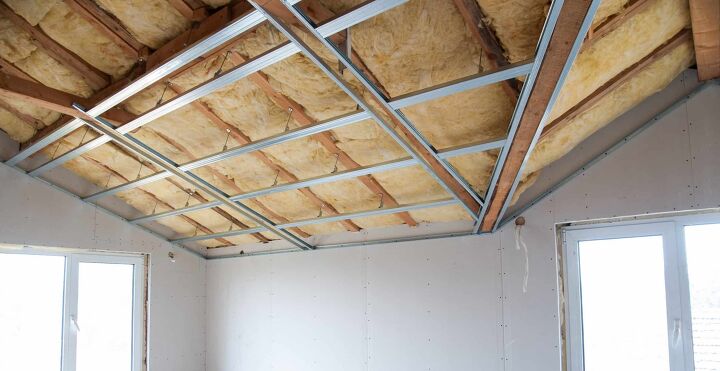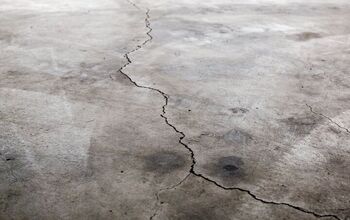Soundproofing Between Floors? (Here's What You Can Do)

Lack of proper soundproofing can be one of your worst enemies in your home. Whether you live in a first-floor apartment or share a home with noisy kids, soundproofing comes in handy.
There are different options when it comes to soundproofing between floors. This includes replacing the ceiling and insulation, soundproofing the underlayment, or placing heavy carpeting on top of the floor. The best materials for underlayment include polyethylene and acoustic foam, plywood, and recycled felt. If possible, it is best to soundproof before installing your floors.
In this article, we’ll discuss the most effective ways to soundproof ceilings as well as floors in apartments and houses.
Do You Need to Hire a Soundproofing Contractor?
Get free, zero-commitment quotes from pro contractors near you.

What are the Different Types of Sound in Houses?
To figure out how to soundproof between floors, you need to know which kind of sound you want to prevent. There are two main kinds of sounds that homeowners usually want to minimize:
Airborne Noise
This is sometimes known as ambient noise. This kind of noise is made by voices, music, television, and ringing phones. The most troublesome airborne noise typically comes from the floor above you in homes and apartments.
Airborne noise is transmitted through the air and travels through floors and ceilings. This type of noise is easiest to minimize during the construction of a home. However, some things can be done to soundproof after construction.
Impact noise
Impact noise is made by an object coming into direct contact with a surface. Some examples include kids jumping up and down, running, and things falling on the floor. This type of noise is usually more difficult to soundproof because it travels differently from airborne noise.
Impact noise creates a vibration that carries through the materials in the floor and ceiling. The best way to prevent impact noise is to separate the constructed materials that are currently attached. This means installing a flexible and durable subfloor beneath floor covering.
With any type of noise, the best results come from soundproofing the materials as close to the source as possible. Therefore, if the noise is coming from upstairs, your best bet is to soundproof the upstairs, if you can. This will be more effective than soundproofing the ceiling on the floor below.
Soundproofing Existing Floors
If you own a home or rent an apartment with multiple levels, you should be able to reduce sound from above. The easiest way to soundproof an existing floor is to add thick carpeting and padding.
This method primarily helps with impact noise. This is great if the troubling noise is coming from people walking heavily or dropping things on the upper floors. Unfortunately, it doesn’t do much for airborne noise.
When you choose carpeting materials, you’ll want to pick the thickest, densest material you can find. This will help to absorb the impact energy before it travels through the structure underneath.
Soundproofing Before Installing Floors
When it comes to soundproofing your floors, you’re at an advantage if you haven’t installed your top floor covering yet. Or if you need to replace your floors soon anyways, this would be the time to think about soundproofing.
Here are some ways to soundproof before installing floor covering:
Installing Underlayment
Flooring underlayment is a type of material that is placed between the subfloor and the top floor covering. The main purpose of underlayment is to provide a smooth surface for the installation of the top layer of flooring.
Another benefit of underlayment is its soundproofing potential. The soundproofing quality of underlayment depends on the type of material you choose.
If you’re installing hardwood floors on top of your underlayment, make sure the wood floats above the underlayment. This means that your wood will not attach directly to the underlayment with screws, nails, or adhesive.
You can also leave a gap between the edge of the floor and the walls when installing hardwood. This is a good spot to apply some acoustic sealant. The space will help to separate the materials and further reduce impact noise.
Best Underlayment for Soundproofing
Here are some of the most common underlayment materials, and how they measure up in terms of soundproofing:
Polyethylene Foam: This is a popular choice of underlayment due to the cost. It’s typically the least expensive option on the market. However, when it comes to soundproofing, you get what you pay for. It’s the thinnest type of foam underlayment, which makes it relatively ineffective for soundproofing.
Acoustic Foam: This underlayment is more effective than polyethylene since it’s thicker and denser. It’s also more expensive than the thinner foam. This is usually used beneath laminate flooring.
Plywood: This does better than polyethylene foam in terms of soundproofing, but is still not your best option. Plywood is usually used under linoleum or vinyl flooring.
Recycled Felt: This material is generally used beneath wood and laminate, and is pretty useful for soundproofing. It’s much heavier and denser than foam underlayment, which makes it able to absorb sound better.
Acoustic: This underlayment can be made out of several different materials, and is specially designed for soundproofing. Some brands and types are better than others, but you can get acoustical underlayment for any type of flooring.
Cement Board: This material usually lies beneath tiled floor, and is very dense. This makes it effective for soundproofing.
Soundproofing Existing Ceiling
If soundproofing the floor on the upper level is not a feasible option, you can soundproof the existing ceiling. Some of these methods require altering the ceiling, which may not be doable in a rental home.
Here’s what you can do to soundproof your ceiling:
Replace the Ceiling
One option to improve the acoustics of the ceiling and block out sound from above is to replace the ceiling. When you remove the existing drywall, or whatever material was used, add soundproofing insulation. This will go in between the floor joists, working around the electric wires, etc. that may exist there.
Fiberglass and foam insulation are the best choices for soundproofing material between the ceiling and floor. Once you’ve added your insulation and replaced the ceiling, you might consider adding another layer of drywall.
Add Another Layer of Drywall
Adding another layer of drywall to the ceiling helps to increase the sound barrier between floors. It can also improve the fire resistance, and add extra protection from moisture and sound.
To maximize the soundproofing ability of your ceiling even further, add some Green Glue in between the layers of drywall. This is an adhesive compound specifically designed to block sound in walls, floors, and ceilings.
Add a Drop Ceiling
A drop ceiling is another ceiling that is hung below the main ceiling. Drop ceilings are a great way to add space between the structural ceiling and the floor above. This will help to reduce impact noise.
Drop ceilings also help to improve the acoustics of the room they exist in as well. The extra layer can help to absorb sound waves in the room to prevent echoes. There are many attractive kinds of drop ceiling to choose from.
Soundproofing in an Apartment Building
Many of the highly effective methods described above won’t work for apartment buildings due to the nature of the installation. Renters have limited options when it comes to making significant changes to their living space.
Unfortunately, it’s difficult to reduce noise from above without making changes to their floor or your ceiling. Renters are not totally out of luck, but there are no guarantees that these solutions will block noise.
Here are some potential soundproofing options for apartments:
Acoustic Foam Panels
If your issue is not with your neighbors, but with an echoing room, this could be a good solution. These sound-absorbing panels are made out of polyurethane foam. They work by adding a porous layer that absorbs reverberating sound, rather than blocking sound.
Acoustic foam panels are often used in recording studios. This is because while absorbing background noise, they also enhance the quality of sound and speech within a room.
Talk to Your Neighbors
This is not an ideal solution to reduce noise coming from upstairs. Asking your neighbors to pipe down can be an awkward conversation for both of you. But if you have a good rapport with your neighbor, a polite conversation might be the way to go.
Apartment buildings are notorious for thin floors and ceilings that are not good sound blockers. As a result, a lot of noise you hear from above is simply regular everyday life routines like walking around. For this reason, asking them if they would mind putting some carpet down or area rugs where they walk couldn’t hurt.
Do You Need to Hire a Soundproofing Contractor?
Get free, zero-commitment quotes from pro contractors near you.

Related Questions
What’s the cheapest way to soundproof a room?
Strategically placed furniture is a cost-effective way to block sound. The best kinds of furniture for this are upholstered couches, dressers, bookcases, and tables. Heavy furniture can help by both soundproofing the floor as well as absorbing sound within the room.
Can I insulate a drop ceiling for soundproofing?
To maximize the soundproofing benefits of your drop ceiling, you can add insulation under the right circumstances. Insulation cannot be added if your drop ceiling has fiberglass tiles, since they can’t support the extra weight. Wood and gypsum tiles need to be at least 5/8 inch thick in order to add insulation.

Kathryn is a craft aficionado who loves writing about DIY home improvement projects. When she's not writing, she loves reading, listening to musicals, and playing with her kids.
More by Kathryn Flegal



























